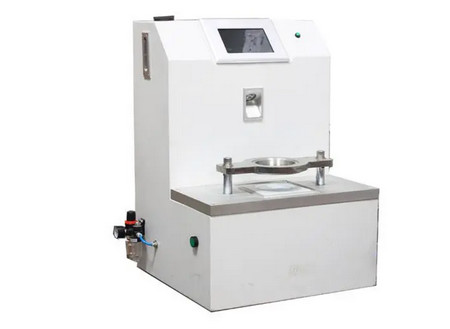
NewsInformation Center
What are the factors that affect the hydrostatic pressure resistance of textiles
2023/03/01
The hydrostatic pressure resistance of textiles generally refers to the ability of fabrics and materials to resist water pressure when they are not subjected to external forces. Generally speaking, the ability of textiles to resist hydrostatic pressure depends on their fiber composition, structure, and the shape of the fabric, as well as on the processing.
What are the factors that influence the hydrostatic pressure resistance of textiles?
The factors influencing the hydrostatic pressure resistance of textiles include fiber composition, yarn density, yarn diameter, fabric thickness, weave structure, fabric construction, etc. The following are specifically described.

1. The tightness of the fabric: the distance between the yarns directly affects the level of hydrostatic pressure resistance, generally the tighter the fabric structure, the better its resistance to water penetration.
2. The size of the coating film aperture: the larger the aperture of the film, the worse the hydrostatic pressure resistance of the coated fabric.
3. The size of the contact angle: when 0>90°, the fabric has water resistance performance, at this time, with the increase of the angle, the fabric's hydrostatic pressure resistance value also increased accordingly.
4. Coating thickness: If the coating is too thin, the coating agent on the surface is not easy to continuously film, and the coating fabric water pressure resistance is reduced; if the coating is thick, and the fabric water pressure resistance increased.
5. Thickness of the fabric: the thicker the fabric, the greater the wet resistance, and the greater the water pressure resistance value.
6. The thickness of the yarn: for the moisture-absorbing fibers woven into a compact fabric, due to the existence of the capillary effect, reducing the radius of the yarn, can improve the fabric's resistance to water penetration.
7. Warp and weft yarn performance: by the role of water pressure, good elasticity of the warp and weft yarn easy to elongate, resulting in the formation of adjacent warp and weft yarn gap, water beads easier to seep through, making the fabric resistance to hydrostatic pressure value reduced.
8. Coating quality: the entire fabric surface is required to be even, with a certain degree of fastness, the better the quality of the coating, the better the resistance to water penetration.
How to test the hydrostatic pressure resistance of textiles?
The steps of the hydrostatic pressure test are as follows.
1. Fix the textile sample to be tested on the surface of the pool so that it is perpendicular to the horizontal plane. 2. Fill the pool with water and adjust the water level until the required test pressure is reached. 3. Set the test time to 30 minutes and observe the deformation of the sample. 4. Lower the water level in the pool to the normal level and observe the deformation of the sample to determine if it can be restored to its original state. 5. Record the test results and examine the sample to determine if it has been affected by the water pressure.
Where should you buy the hydrostatic head test machine?
Standard GroupsIt is a professional Hydrostatic Head Test Machine Manufacturer,Standard Groups is an integrated supplier specialized in providing material test instruments and “The Whole Laboratory Program” solutions. The main products cover many areas: Textile and Apparel, Leather and Footwear, Flammability Testing, Filter Material Testing, Automotive Interior, Toy Testing, Non-woven and Geo-membrane, Carpet Testing, Luggage/Furniture/Office Furniture Testing, Material and Parts of Automotive, Weathering and Light Stability Testing, Ovens and Environmental Testing Chambers, Salt Fog Chambers, Materials Testing Machines, 3D Body Scanning and Manikin, Air Quality Monitoring and Measurement, Package Material Testing, Electrical Safety Testing, Optical and Spectroscopy Instruments, Lighting and Color Assessment, Microscopy and Legal Inspection, and relative testing services.
Previous: What is an ink abrasion resistance tester, and how does it work?
N e x t : Apparel Alert:: An overview of global trade in textiles and clothing to 2022



